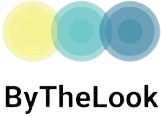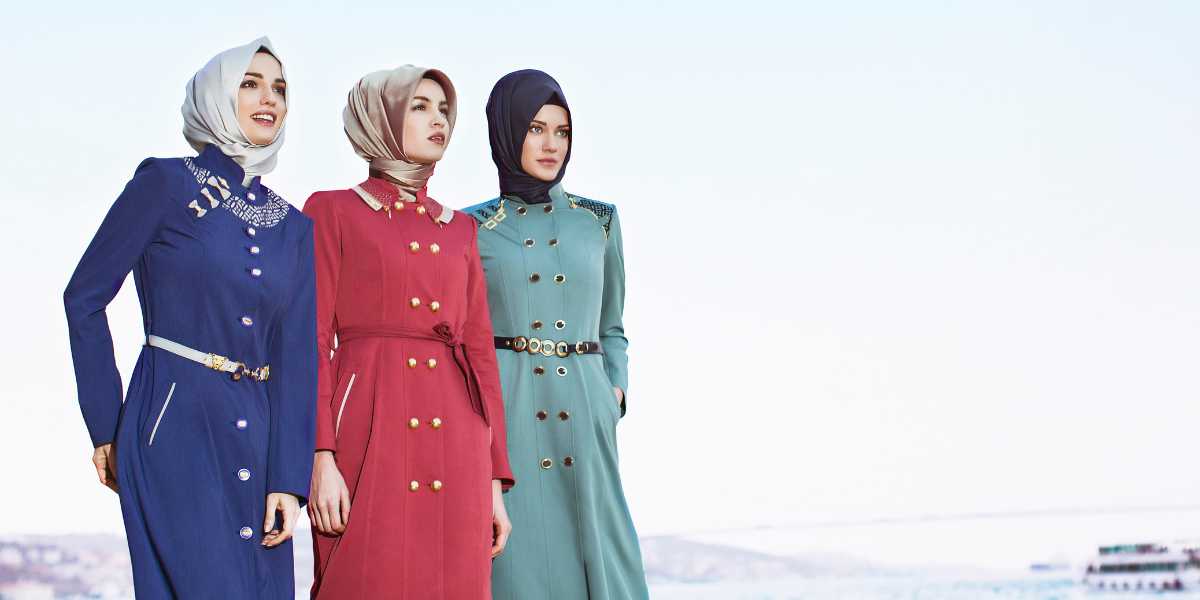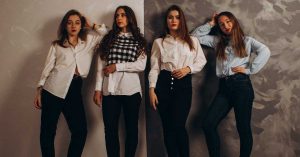In a fashion landscape often dominated by trends that favor less coverage, the rise of modest fashion marks a significant shift, reflecting a broader demand for inclusivity and respect for cultural and personal preferences in dressing. Modest fashion, characterized by its conservative and stylish designs, is increasingly embraced not just by those who choose modesty for cultural or religious reasons, but also by individuals seeking elegance in simplicity.
Understanding Modest Fashion
Modest fashion, while rooted in cultural and religious norms, has transcended its traditional boundaries to become a widely embraced trend in the global fashion landscape. This segment of fashion is characterized by styles that cover more of the body than mainstream fashion typically does, emphasizing less skin exposure through higher necklines, longer hemlines, and fuller sleeves. What defines “modest” varies significantly across different cultures and personal preferences, making it a highly subjective and fluid concept.
Historically, modest fashion has been closely associated with religious adherence, catering primarily to women in conservative communities. However, its appeal has broadened, driven by a growing recognition of its elegance, comfort, and versatility. It now attracts a diverse consumer base, including those who prioritize practicality in their attire or who seek alternatives to the pervasive trend of revealing clothing in mainstream fashion.
The rise of modest fashion can be attributed to several factors. Social media platforms and fashion influencers have played a pivotal role, showcasing the versatility and modernity of modest fashion to global audiences. These influencers debunk the myth that modest clothing must be antiquated or unattractive, instead presenting it as fashionable and contemporary. Instagram, Pinterest, and fashion blogs are replete with examples of how modest apparel can be both stylish and functional, offering inspiration to a wide demographic.
Designers and brands have responded to this increased interest with innovative designs that maintain modesty without sacrificing style. From luxury fashion houses to fast fashion brands, the industry is expanding its offerings to include modest options, indicating the sector’s growing commercial significance. Fashion weeks around the world have begun to showcase modest fashion lines, further legitimizing the trend in the eyes of the global fashion community.
Furthermore, the demand for modest fashion is not only about adhering to cultural or religious dictums but also about providing options for those who simply prefer more coverage. The movement towards inclusivity in fashion embraces this preference, recognizing the need to cater to all consumers regardless of their motivations for dressing modestly.
Modest fashion is a dynamic and evolving field that reflects broader societal shifts towards inclusivity and respect for diversity. As it continues to grow, it challenges the fashion industry to innovate and adapt, ensuring that style is accessible to everyone, regardless of personal style preferences or cultural norms.
The Demand Drives Innovation
In the world of modest fashion, the increasing consumer demand has become a powerful catalyst for innovation. As the market for modest clothing expands, brands and designers are leveraging advanced technology to meet the diverse needs of their consumers more effectively and swiftly. This surge in demand has not only validated the economic potential of modest fashion but has also encouraged brands to innovate continually.
One of the most significant innovations driving this sector forward is the integration of machine learning and artificial intelligence in fashion design and retail. Fashion tech startups and established brands alike are using these technologies to analyze big data from social media trends and consumer behavior. This data-driven approach enables them to predict and react to fashion trends rapidly, ensuring that their offerings align with consumer expectations.
For instance, machine learning algorithms can track real-time fashion trends on platforms like Instagram and Pinterest, where many modest fashion influencers share their outfits. By analyzing these data points, brands can identify emerging patterns in modest fashion preferences, such as favored styles, fabrics, or colors. This information is crucial for manufacturers who aim to produce garments that are not only modest but also trendy and desirable.
Moreover, the demand for customization and personalization in fashion has led to technological advancements in production techniques. Brands are adopting on-demand manufacturing, which allows for quicker response times to market changes and reduces waste, aligning with the ethical considerations important to many consumers of modest fashion. This method supports the production of modest fashion in smaller, more specific batches that cater to particular tastes and needs, enhancing customer satisfaction and brand loyalty.
E-commerce innovation is also significant. Online shopping platforms have become increasingly sophisticated, offering virtual try-on capabilities and personalized shopping experiences. These features are particularly appealing in the modest fashion market, where fit and style are crucial, and consumers may feel underserved by traditional retail environments.
Social media marketing has evolved alongside these technological advancements. Brands are now engaging directly with consumers through platforms like Instagram and TikTok, using influencers to showcase their products. This strategy not only broadens their reach but also embeds their products within the lifestyle narratives that resonate with their target audiences, making modest fashion more accessible and appealing to a global audience.
The demand for modest fashion grows, so does the incentive for brands to invest in new technologies and innovative practices. This results in a vibrant, rapidly evolving industry where consumer needs drive technological advancements, leading to greater diversity and choice in the fashion market, and demonstrating the profound impact of consumer demand on driving innovation in the industry.
Fashion Forward: Integrating Technology
In the dynamic world of fashion, technology plays a pivotal role in shaping industry trends and consumer experiences. As the demand for diverse and inclusive fashion options, such as modest fashion, continues to rise, technology integration has become a crucial element in the industry’s evolution. From design through production to sales, cutting-edge technological tools are revolutionizing the way fashion operates, making it more responsive to consumer needs.
Advanced technologies like artificial intelligence (AI) and machine learning (ML) are at the forefront of this transformation. These tools analyze vast amounts of data from social media, online searches, and shopping patterns to identify what styles are in demand, allowing brands to tailor their offerings to meet current market trends quickly. For modest fashion, this means that designers can create pieces that are not only appropriate but also align with the latest fashion trends, ensuring that they are both respectful of cultural norms and appealing to modern aesthetics.
Another significant technological advancement is in the realm of augmented reality (AR) and virtual reality (VR). These technologies are enhancing the online shopping experience by allowing consumers to try on clothes virtually before making a purchase. This is particularly beneficial for the modest fashion market, where fit and style play a critical role in the purchasing decision. AR and VR provide a more interactive and personalized shopping experience, reducing the uncertainty that can accompany online shopping and improving customer satisfaction.
E-commerce platforms have also seen considerable innovations. With the integration of advanced analytics and personalized marketing, these platforms can offer a customized shopping experience that suggests products based on the consumer’s past shopping behavior and preferences. For modest fashion consumers, who often have specific needs, this personalized approach can make the shopping experience more efficient and enjoyable.
Furthermore, sustainability is a growing focus in the fashion industry, with more consumers demanding environmentally friendly practices. Technology facilitates the adoption of sustainable practices in fashion production, such as digital fabric printing and automated sewing systems, which reduce waste and energy consumption. These technologies ensure that the production of modest fashion garments adheres to both ethical standards and environmental regulations, enhancing brand reputation and consumer trust.
Technology continues to evolve, so too does the fashion industry, adapting to new challenges and meeting the expectations of a diverse global market. The integration of technology in fashion not only drives innovation but also ensures that the industry remains forward-thinking and inclusive.
Challenges and Opportunities
The growth of modest fashion, while impressive, is not without its challenges. However, each challenge also presents unique opportunities for innovation and growth within the industry.
One of the primary challenges facing modest fashion is the stereotype that it is not fashionable or modern. This perception can hinder mainstream acceptance and growth. However, this also provides a significant opportunity for designers and brands to innovate and challenge these preconceptions. By incorporating contemporary trends and styles into modest fashion designs, brands can redefine what modest fashion looks like and appeal to a broader audience.
Another challenge is the fragmented nature of the modest fashion market. Consumers of modest fashion come from various cultural and religious backgrounds, each with different standards of modesty. This diversity can make it difficult for brands to design products that meet all these varying needs. The opportunity here lies in the use of technology to create adaptable designs or customizable garments that can cater to a wide range of preferences and body types, thus broadening the market base.
Market penetration is also a challenge, particularly in regions where modest fashion is not the norm. However, this too is an opportunity to educate and create awareness around the versatility and elegance of modest fashion. Social media and influencer marketing play crucial roles here, enabling brands to reach global audiences and showcase the appeal of modest fashion to those outside its traditional consumer base.
Lastly, maintaining the balance between adhering to traditional modesty requirements and embracing modern fashion trends can be challenging. The opportunity here is to be seen as a leader in a niche market. Brands that successfully navigate this balance can position themselves as pioneers in a growing industry segment, setting trends and influencing mainstream fashion.
While the challenges in modest fashion are significant, they are not insurmountable. Each challenge brings with it the opportunity to innovate, expand, and redefine what modest fashion can be, ultimately leading to a more inclusive and diverse fashion industry.
The Future of Modest Fashion
The trajectory of modest fashion is poised for a promising future, characterized by broadening appeal, innovative designs, and substantial market growth. As global cultural dynamics shift and consumers increasingly call for inclusivity in the fashion industry, modest fashion stands at the forefront of a significant market evolution. This segment of the fashion industry is not just about catering to religious or cultural needs; it’s about providing options for anyone interested in stylish, less revealing attire.
Expanding Consumer Base: Initially, the primary market for modest fashion comprised individuals seeking attire that aligns with specific cultural or religious practices. However, the appeal of modest fashion has expanded far beyond these groups. A growing number of consumers are attracted to modest fashion for reasons ranging from personal style preference to professional workplace attire. This broadening appeal is likely to continue as more people discover the versatility and sophistication that modest styles can offer.
Technological Integration and Innovation: Looking ahead, technology will play an even more integral role in the development of modest fashion. Artificial intelligence and machine learning are set to refine how fashion brands forecast trends and manage inventory, ensuring that designs not only meet modesty standards but are also fashion-forward and responsive to consumer demands. For instance, virtual fitting rooms and augmented reality apps will likely become more widespread, offering modest fashion shoppers the ability to try on clothes virtually from the comfort of their homes, ensuring fit and style before making a purchase.
Moreover, sustainability will continue to be a significant focus, with more brands likely to adopt eco-friendly practices in the production of modest fashion. This shift is not only good for the planet but also aligns with the ethical standards expected by many consumers of modest apparel. Brands that can successfully integrate sustainable practices with their fashion lines will appeal to environmentally conscious consumers, further expanding their market reach.
Enhanced Global Reach Through E-commerce: The global reach of modest fashion will also expand through enhanced e-commerce platforms. Online shopping has already transformed the fashion industry, and for modest fashion, it offers a way to bridge geographical gaps where access to such clothing might be limited. As e-commerce platforms continue to improve with better logistics, language support, and localized marketing, they will make modest fashion more accessible worldwide, driving further growth in this segment.
Influence of Social Media and Influencers: Social media will continue to be a driving force in the growth of modest fashion. Platforms like Instagram, TikTok, and Pinterest allow designers and brands to showcase their creations to a global audience. Influencers who wear and promote modest fashions demystify the style, showing that it can be both trendy and respectful of cultural and personal preferences. As these influencers continue to gain followers, they will play a crucial role in shaping perceptions and increasing the visibility of modest fashion.
Modest fashion is more than just a trend; it is a movement towards embracing diversity in fashion choices and respecting individual preferences in how people choose to present themselves. As the industry continues to evolve, the future of modest fashion looks promising, with endless possibilities for growth and innovation.






